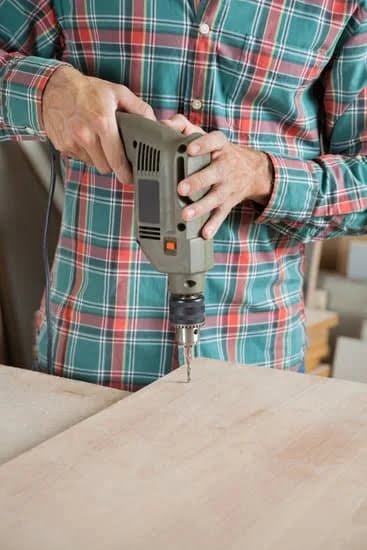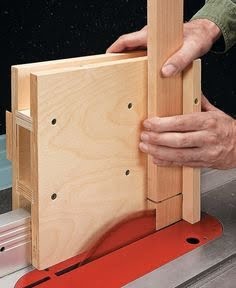Woodworks includes the crafting, shaping, and manipulation of wood to create various structures, designs, and functional pieces. It is a significant aspect of construction and design, with woodworking techniques and processes being integral to creating everything from furniture and cabinetry to decorative items and flooring. Understanding what woodworks includes is essential for anyone interested in carpentry, DIY projects, or pursuing a career in woodworking.
The types of wood used in woodworking are diverse, ranging from hardwood and softwood to engineered wood. Each type has its own unique characteristics that make them suitable for different applications within the realm of woodworking. Additionally, the essential tools and equipment used in woodworks are crucial for achieving precision cuts, detailed carving, and flawless finishes. Saws, chisels, drills, and sanders are just a few examples of the tools required for successful woodworking projects.
Furthermore, mastering the various techniques and processes involved in woodworks is vital for producing high-quality and durable wooden creations. From cutting and carving to shaping and finishing, these skills allow woodworkers to bring their ideas to life with finesse and artistry. In addition to practicality, sustainability practices in woodworks also play a critical role by ensuring ethical sourcing of materials and utilizing eco-friendly finishes for a more environmentally-conscious approach.
Types of Wood
Woodworks includes the use of various types of wood, each with its unique characteristics and properties that make them suitable for different applications. Hardwood, softwood, and engineered wood are the three primary categories used in woodworking. Hardwood comes from broad-leaved trees and is known for its durability and strength, making it ideal for furniture making, flooring, and cabinetry.
Some common hardwoods include oak, maple, cherry, and walnut. Softwood, on the other hand, is sourced from coniferous trees and is generally less dense than hardwood.
It is often used in construction and outdoor projects due to its affordability and availability. Examples of softwoods include pine, cedar, spruce, and fir. Engineered wood is a composite material made from wood fibers or particles bonded together with adhesives to create boards or panels with enhanced strength and stability. This type of wood is commonly used in structural applications as well as for decorative purposes.
In addition to the types of wood mentioned above, there are also specialty woods that offer unique characteristics for specific woodworking projects. For example, exotic woods like teak, mahogany, rosewood, and ebony are prized for their distinct coloration and grain patterns, making them popular choices for high-end furniture and decorative items.
Understanding the different types of wood is crucial in woodworking as it determines the overall quality and longevity of the finished product. Each type has its own set of advantages and disadvantages when it comes to workability, appearance, cost-effectiveness, sustainability, etc.
| Type of Wood | Common Uses |
|---|---|
| Hardwood | Furniture making, flooring,cabinetry |
| Softwood | Construction,outdoor projects |
| Engineered Wood | Structural applicationsdecorative purposes |
Tools and Equipment
Woodworking encompasses a diverse range of activities that involve shaping, carving, and crafting wood into various functional and aesthetic items. To achieve this, woodworkers rely on a variety of tools and equipment to execute different tasks with precision and efficiency. These tools are essential for cutting, drilling, shaping, and finishing wood, allowing craftsmen to bring their creations to life. In this section, we will delve into the essential tools and equipment used in woodworks, including saws, chisels, drills, and sanders.
Saws are fundamental instruments in woodworking that come in various types designed for specific cutting tasks. From crosscut saws for cutting across the grain to rip saws for cutting with the grain, each saw serves a unique purpose in the woodworking process.
Chisels are another crucial tool used for carving and shaping wood, available in different shapes and sizes to accommodate diverse projects. Meanwhile, drills enable woodworkers to create holes for joinery or wiring, with options ranging from hand drills to power drills for increased efficiency.
In addition to saws, chisels, and drills, sanders play an important role in refining the surface of wooden pieces by smoothing rough edges and removing imperfections. The use of sanders ensures that finished products have a polished and refined appearance.
Other tools such as clamps, planes, routers, and measuring devices also contribute to the precision and quality of woodworking projects. Overall, the tools and equipment involved in woodworks are critical in bringing creativity and craftsmanship together to produce remarkable wooden creations.
| Woodworking Tool | Function |
|---|---|
| Circular Saw | Cuts straight lines through various types of wood |
| Chisel | Used for carving and shaping wood |
| Power Drill | Creates holes for screws or dowels |
| Sander | Smoothes wooden surfaces by removing roughness |
Techniques and Processes
Woodworks encompasses a wide range of techniques and processes that are essential for transforming raw wood into functional and aesthetically pleasing items. From basic cutting to intricate carving, the art of woodworking requires skill, precision, and creativity. Understanding these techniques and processes is fundamental for anyone aspiring to excel in this craft.
Cutting and Shaping
One of the fundamental aspects of woodworks includes cutting and shaping wood to the desired dimensions and forms. This process can involve using hand saws, power saws, or specialized cutting tools based on the specific requirements of the project. Precision is key when it comes to cutting and shaping wood, as any inaccuracies can affect the overall outcome of the final product.
Carving and Detailing
For more intricate designs and decorative elements, carving plays a crucial role in woodworking. Whether it’s creating ornate patterns on furniture or sculpting intricate figurines, carving requires a steady hand and an eye for detail. Woodworkers use various chisels, knives, and gouges to achieve different textures and designs in their carvings.
Finishing Techniques
Once the primary construction is complete, applying finishes is an important part of woodworks. Finishing techniques include staining, varnishing, painting, or lacquering to enhance the appearance of the wood while also protecting it from environmental factors such as moisture or sunlight. Understanding how to apply finishes correctly is vital for ensuring longevity and beauty in woodworking projects.
In summary, mastering these techniques and processes involved in woodworks is essential for creating high-quality products that are both functional and visually appealing. With practice and dedication, individuals can develop their skills in cutting, carving, shaping, and finishing to bring their woodworking visions to life.
Applications
Woodworks includes a wide range of applications, making it a versatile and essential craft in the construction and design industries. From furniture making to cabinetry, flooring, and decorative items, woodworks play a crucial role in creating functional and aesthetically pleasing products for homes, offices, and other spaces. Let’s delve deeper into the diverse applications of woodworks and explore the significance of each.
Furniture Making
One of the most prominent applications of woodworks is in furniture making. Whether it’s crafting a simple chair or an elaborate dining table, woodworking skills are essential in creating durable and visually appealing pieces of furniture. The choice of wood type, joinery techniques, and finishing methods all contribute to the quality and style of the final product. Woodworkers often work closely with interior designers and architects to create custom-made furniture that meets specific design requirements.
Cabinetry
Cabinetry is another key aspect of woodworking, involving the construction of storage units, shelves, built-in wardrobes, kitchen cabinets, and more. Woodworkers need to consider factors such as space utilization, functionality, durability, and aesthetics when designing and constructing cabinets. With various types of woods available for different styles and preferences, cabinetry showcases the craftsmanship and attention to detail that goes into woodworking projects.
Flooring
Wooden flooring has been a popular choice for both residential and commercial spaces due to its natural beauty, warmth, and longevity. Woodworks includes the installation and maintenance of hardwood floors through precision cutting, fitting, sanding, staining or varnishing processes. Different wood species offer unique characteristics that can enhance the overall look and feel of a room. Woodworking skills are vital in ensuring that the flooring is properly installed with structural integrity while achieving a seamless finish.
Decorative Items
Beyond functional uses like furniture and cabinetry, woodworks also extends to creating decorative items such as wooden sculptures, wall art pieces, vases, bowls, picture frames, clocks, etc. adding aesthetic appeal to interior spaces. These artistic endeavors showcase the creativity and versatility that woodworkers possess in producing unique handcrafted items that add character and charm to any environment.
Overall
Sustainability
Woodworks includes various practices and processes that are crucial for creating sustainable and environmentally friendly products. In the context of woodworking, sustainability refers to the responsible management of resources, ethical sourcing of materials, and the use of eco-friendly finishes. This section will delve into the importance of sustainable practices in woodworks, emphasizing the need for ethical sourcing and eco-friendly finishes.
Ethical sourcing is a fundamental aspect of sustainability in woodworks, as it ensures that the raw materials used are obtained through responsible and environmentally sound methods. This involves sourcing wood from well-managed forests or using reclaimed and recycled wood to minimize environmental impact. By selecting ethically sourced materials, woodworkers can contribute to forest conservation efforts and promote biodiversity while reducing their carbon footprint.
In addition to ethical sourcing, the use of eco-friendly finishes is essential for promoting sustainability in woodworks. Traditional finishing products often contain volatile organic compounds (VOCs) that can be harmful to both human health and the environment. However, there are now numerous eco-friendly finishing options available, such as natural oils, plant-based waxes, and water-based sealants.
These alternatives not only reduce the emission of harmful chemicals but also provide a safer and healthier working environment for woodworkers. By adopting these sustainable practices in woodworks, individuals can contribute to environmental conservation efforts while creating beautiful and functional wooden products.
As awareness of environmental issues continues to grow, incorporating sustainable practices in woodworks has become increasingly important. Ethical sourcing and eco-friendly finishes are not only beneficial for the planet but also appeal to consumers who prioritize sustainability when making purchasing decisions. Therefore, integrating these practices into woodworking processes is essential for promoting responsible production and ensuring a greener future for the industry.
Common Challenges
Woodworking, also known as wood crafts or carpentry, includes a wide range of activities and processes that involve working with wood. From building furniture to creating decorative items, woodworks encompasses various skills and techniques that require precision and creativity. Whether you are a professional woodworker or an enthusiastic hobbyist, it is essential to be aware of the common challenges that may arise during woodworking projects.
Here are some of the common challenges faced in woodworks:
1. Warping: Wood has a tendency to warp due to changes in moisture content and environmental factors. This can affect the overall quality and appearance of the finished product. To prevent warping, it is important to properly store and acclimate the wood before use. Additionally, utilizing proper joinery techniques and sealing the finished piece can help minimize the risk of warping.
2. Cracking: Wood can crack or split when exposed to rapid changes in temperature or humidity, as well as excessive dryness. It is crucial to select suitable wood species for specific projects and to employ proper drying and storage methods. Furthermore, applying appropriate finishes can help mitigate cracking issues.
3. Insect Damage: Insects such as termites and beetles can wreak havoc on wooden structures and furniture if not addressed promptly. Preventative measures include using insect-resistant woods, applying protective coatings or treatments, and regularly inspecting for signs of infestation.
Addressing these challenges requires knowledge of both the properties of different types of wood and the best practices in woodworking techniques. By being mindful of these potential problems and employing preventative measures, woodworkers can create high-quality pieces that withstand the test of time.
Please note: It is important to remember that each woodworking project presents its own unique set of challenges based on factors such as wood species, environmental conditions, and design intricacies. Flexibility, problem-solving skills, and attention to detail are essential for overcoming these obstacles effectively.
Tips for Beginners
Woodworking can be a fulfilling and rewarding hobby or profession for individuals interested in working with their hands and creating functional or decorative items from wood. For beginners who are just starting out in woodworks, there are several practical tips and pieces of advice to consider in order to ensure a safe and successful experience.
Whether you are interested in crafting small DIY projects or pursuing more complex woodworking endeavors, here are some essential tips to keep in mind:
- Invest in quality tools: When beginning your venture into woodworking, it is important to invest in high-quality tools that will not only make the process easier but also ensure safety. Essential tools such as saws, chisels, drills, and measuring devices are crucial for any woodworking project.
- Understand wood properties: Different types of wood have unique properties that can affect how they behave during the woodworking process. Hardwood, softwood, and engineered wood all have distinct characteristics that influence their strength, workability, and appearance when used for various projects.
- Focus on safety measures: Prioritize safety at all times by wearing protective gear such as safety goggles, gloves, and ear protection. Additionally, familiarize yourself with the proper usage of all tools and equipment to minimize the risk of accidents.
As you begin your journey into woodworks, it’s important to start with simple projects that match your skill level before advancing to more complex endeavors. Simple yet rewarding projects for beginners include constructing basic shelves, making wooden toolboxes or frames, or even carving small decorative items. Taking on manageable projects will allow you to hone your skills while gaining confidence in handling different techniques.
Remember that learning woodworking takes time and patience – don’t be discouraged by initial failures or mistakes; rather view them as valuable learning experiences that will contribute to your growth as a woodworker over time. As you progress in your skills and knowledge of woodworking techniques, don’t hesitate to seek inspiration from accomplished craftsmen or attend workshops and classes that can further enhance your understanding of what woodworks includes.
With dedication and practice, anyone can master the art of working with wood to create beautiful and functional pieces.
Conclusion
In conclusion, woodworks encompasses a wide range of activities and processes that are essential in construction and design. From the selection of the right type of wood to the use of various tools and techniques, woodworking involves a combination of creativity and practical skills. Whether it is crafting furniture, designing cabinetry, or creating decorative items, woodworks offers endless possibilities for artistic expression and functional craftsmanship.
It is important to note that what woodworks includes goes beyond mere carpentry; it involves a deep understanding of different types of wood, including hardwood, softwood, and engineered wood. Additionally, sustainability plays a crucial role in modern woodworking practices, emphasizing ethical sourcing and eco-friendly finishes to minimize environmental impact.
Despite the common challenges faced in woodworks such as warping, cracking, and insect damage, beginners can still find success by adhering to safety measures and seeking guidance from experienced craftsmen. Overall, woodworks is not only a practical skill but also an art form that allows individuals to bring their creative ideas to life through the versatile medium of wood.
Frequently Asked Questions
What Does Woodworking Include?
Woodworking includes the crafting, shaping, and making of objects out of wood using various tools and techniques. This can range from building furniture, cabinets, and shelves to intricate wood carving and sculpting.
What Is Involved in Woodworking?
Woodworking involves a variety of skills and processes, such as measuring, cutting, shaping, joining, and finishing wood to create functional or decorative items. It requires the use of specific tools like saws, chisels, planes, sanders, and drills to manipulate the wood into the desired form.
What Is Considered Woodwork?
Woodwork encompasses a wide range of products and projects made from wood. This can include traditional carpentry work like building structures or making wooden fixtures for buildings as well as more artistic endeavors such as creating wooden sculptures or intricate pieces of furniture. From simple DIY projects to complex artisanal creations, all fall under the category of woodwork.

Hi everyone! I’m a woodworker and blogger, and this is my woodworking blog. In my blog, I share tips and tricks for woodworkers of all skill levels, as well as project ideas that you can try yourself.





